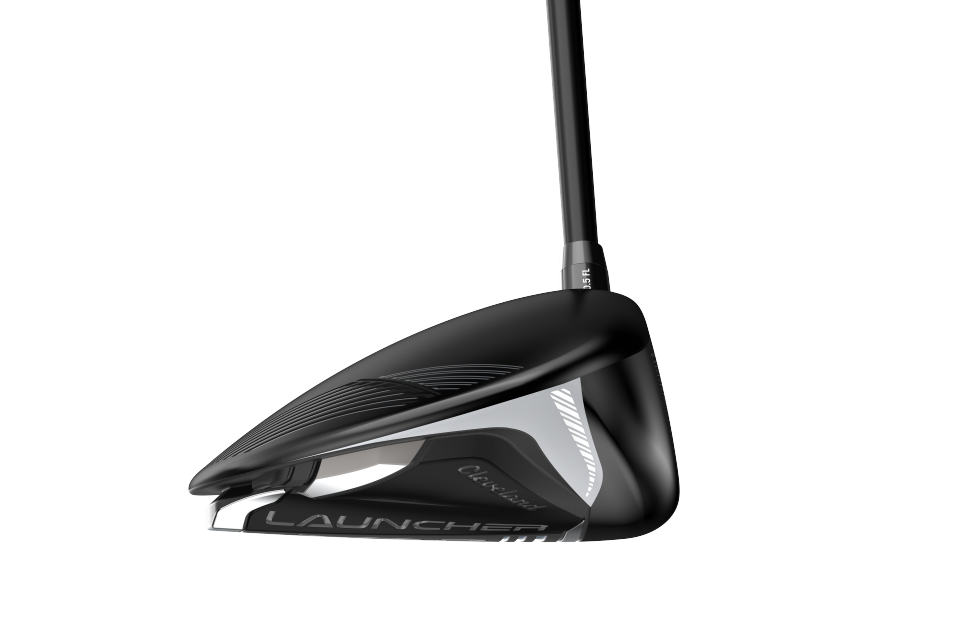WHAT YOU NEED TO KNOW: The Cleveland Launcher XL 2 drivers, including standard and draw models, push the boundaries of the rules that limit size to create more forgiveness through extreme perimeter weighting. The two heads also feature face designs and internal weighting modelled on computer simulations of the probable impact patterns and optimised ball flight of average golfers.
PRICE: Australian pricing is TBA. One loft on each model, with 12 settings between 9 and 12 degrees. Available at retail from January 19.
 3 COOL THINGS
3 COOL THINGS
1. Bigly big. On the surface, it seems ridiculous to suggest Cleveland’s XL 2 drivers are bigger than ever when the rules limiting the size of a driver have been in place for two decades. But that’s just it: these drivers are bigger than the current industry standard by stretching to the very edge of the rules. Those rules state that the heel-to-toe dimension and front-to-back dimension must fit within a five-inch square box. The XL 2 barely does by millimetres, not merely as some kind of party trick, but in a committed way that makes average golfers’ worst hits distinctly less so. In technical terms, it’s designed to increase the head’s moment of inertia, or stability on off-centre hits, both from heel to toe and high to low on the face. These are drivers, a standard model along with a draw version, that are laser focused on what most golfers need most: forgiveness on off-centre hits.

The first step towards that larger forgiveness comes from the size certainly, and unlike many drivers on the market, the design team felt no compulsion to compromise that size based on trying to appeal to the preferences of tour players and those who talk about drivers like they’re some kind of 20-year-old scotch. Like XXXX Gold, this is a driver for the average golfer.

“When we pushed that five-by-five size, it was towards more forgiveness, so the only reason we would have gone to something smaller was maybe about market perception,” said Dustin Brekke, director of engineering at Cleveland. “We think this is the kind of driver that fits the needs of 75 percent of avid golfers.”
It’s not just the size, but also the way mass is distributed within that frame that creates optimal forgiveness. That’s where the company’s use of artificial intelligence helps to speed up discovering where that mass should be positioned in ways that still led to the best ball speed and the best overall distance. It’s what the company calls “Mainframe Weighting”, and the system has been used on past iron designs.
“The Mainframe weighting makes it so we don’t have to decide which is more important: sweet spot or MOI or this or that,” Brekke said. “All of it gets packaged into the analysis and considered to get us the best result.”

2. Face it. A ginormous footprint lends stability but it doesn’t in and of itself make for a faster driver. That’s why Cleveland again is employing the alternating stiff and flexible zones surrounding the face called “Rebound Frame”. Developed originally for its tour-level Srixon drivers and seen in the Launcher XL driver, the new shape of the XL 2 required even more tweaks to create a secondary flex zone in the front part of the crown and sole that is designed to allow more of the face to flex at impact. The key is a larger edge radius at the front part of the head that curves toward the face, specifically the leading edge at the sole and the transition zone at the edge of the crown.
Essentially, even though the face area on the Launcher XL 2 is a bit smaller (to allow the body to stretch wider and longer and save mass to be used for increased stability, or MOI), it’s more effectively designed to produce better distance based on where average golfers contact the face most often. Cleveland’s engineers determined that impact probability by studying nearly 100,000 hits from players like those the Launcher XL 2 and Launcher XL 2 Draw were being designed for.
Further improving the way the face performs on off-centre hits is a flared toe section that reduces the loss of ballspeed on toe impacts, particularly those hits lower on the face.

Launcher XL2 Draw
3. Sliced bread. If a driver is going to target improving the performance of average golfers, then a significant part of that mission probably needs to be about counteracting the slice. That’s why the line again has a draw version, which this year also is adjustable like the standard model to accommodate 12 settings between 9 and 12 degrees. The Launcher XL 2 Draw features a footprint that skews slightly towards the heel side. That shape, combined with heel side internal weighting, helps to build in draw bias, along with a lie angle that’s a degree more upright than the standard model.
Rather than concentrating all the saved weight in the heel on the draw model, the internal weighting still distributes mass somewhat in the deep perimeter to maintain better ball speeds and distance on off-centre hits. If all the excess mass was concentrated in the heel, it might sacrifice off-centre distance.

Also adding to more control and efficiency on the downswing, both models feature an eight-gram counterweight in the butt end of the grip. The counterbalancing creates a lighter weight feel, a technology successfully employed on the company’s higher-end XXIO-branded clubs.
